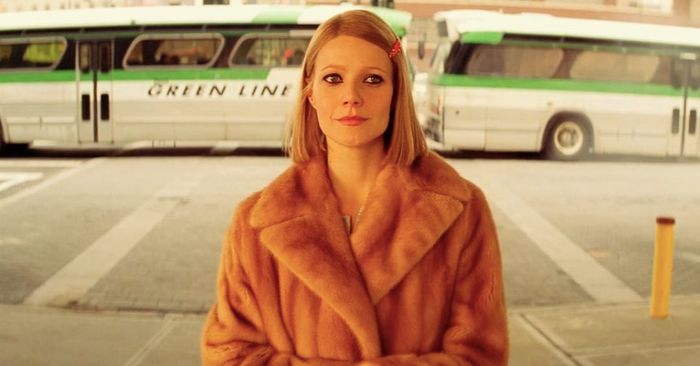What would Buffy wear?: the undead influence of the vampire slayer’s style
Fashion Editor Martha French on the enduring power of cult TV show Buffy the Vampire Slayer over our wardrobes.
“Ok, sometimes, when it’s dark and I’m all alone, I think ‘What is Buffy wearing?’”, admits the ever-lewd Xander Harris in the fourth season of the hit tv series. Indecorous as it may be (and swiftly filed under: Things That Force Me to Acknowledge Buffy Was In Fact a Product of Late 90s America and - Most Tragically of All - a Male Writer’s Room), this line does speak importantly to the command of the world of fashion over the show, or perhaps rather the command of the show over the world of fashion.
Buffy the Vampire Slayer does what is says on the tin, following spirited high-schooler Buffy Summers - played by Sarah Michelle Gellar - as she balances her duty to fight evil with the more pressing perils of teen life. The series is set in the fictional town of Sunnydale, California, a place where designer items are as prevalent as demons. Buffy herself is as much style icon as slayer, curating accessories and weaponry with equal ardour.
If you’ve seen the show, you will be familiar with - and aching for - the Buffy Summers staples. The costume department deserves praise for an ingenious attention to detail, with every scene bringing a new, meticulously constructed outfit, defined by its eccentricity and flair. Whether it’s the long leather jacket, one of her endless supply of mid-length floral skirts, a slinky, sparkly cami, those maroon leather trousers, a paisley bandana and dainty pastel cardigan combo, or the white dress to end all dresses (S1E12, if you know you know), the opportunities to whine “Ooh I want that!” whilst watching are close to limitless.
After all, nineties and early noughties fashion is currently enjoying something of a renaissance, and Buffy - broadcast between 1997 and 2003 - immortalises the quintessential high school and college wear of this period, serving as a sort of time capsule for the very kind of endearingly tragic fashion we now spend hours trawling eBay in search of, over twenty years after it was first deemed ‘cool’.
“Buffy changed the way fashion is represented in popular culture”
Consequently, far from just an easy halloween costume, Buffy now acts as a sort of catalogue for women’s clothing. Preppy Cordelia’s signature mini dresses never miss the mark, and I’ll be the first to admit the chunky, childlike jumpers of Willow Rosenberg (Alyson Hannigan) have a certain charm to them. Costume designer Cynthia Bergstrom crafts a universe in which even unearthly villains are fashion-conscious; hell-goddess Glory’s iconic red cocktail dress and vampire Drusilla’s array of Josephine Bonaparte-esque gothic numbers are undeniably drool-worthy. It is one of those rare shows wherein there is style inspiration in every frame.
In fact, it is not unreasonable to argue that Buffy changed the way fashion is represented in popular culture, especially in the context of young women. Buffy was a female protagonist with a passion for style, without that subsuming her whole personality or detracting from her credibility as Strong Independent Woman, in the same way that graver issues never got in the way of this love of clothing, but instead informed it. Buffy’s patrolling outfits maintain a femininity and couture-consciousness that encourages viewers to align fashion not simply with function, but with force. The series explicitly deconstructs the notion of fashion as trivial or secondary, and in turn it becomes one of its most crucial elements.
For its writers were unafraid to utilise style as a means of storytelling. We learn to read characters’ moods based on outfits and not expressions, to assess jewellery for signs of magic. Across the seasons, there are innumerable items which require decoding, and in turn fashion becomes a part of the drama, a secret language embedded in the narrative, saying so much without ever having to speak.
“perfecting the Buffy Summers look all but demands shopping second hand, rewearing, refining”
This is credit to the ever-present desire of Bergstrom to reflect the revolutionary nature of the show in its protagonist’s wardrobe, stating “I wanted things to be either the cutting edge of trends — starting the trend — or on-trend and, mostly, I just wanted things that we hadn’t seen before”. These simple criteria, built on drawing from “European fashion magazines and avant garde fashion”, allowed Buffy not only to immortalise the fashion of her time, but to create it. This very experimentalism is what has kept its style alive for over two decades.
And this legacy is protected further by the array of Instagrams founded with the exact aim of chronicling Buffy’s fashion. Popular accounts such as @buffystyle and @buffytheoutfitslayer capitalise on the show’s distinctive style, offering detailed - and often gloriously tongue in cheek - analyses of various characters’ most iconic looks. Social media was but a twinkle in Zuckerberg’s eye when the first episode of Buffy premiered back in 1997 (in fact, the season one episode “I Robot… You Jane” now plays as an eerie premonition of the dark side of the internet and its ‘influencers’) and yet its growth has been crucial for the continuing influence of the show. In terms of trends, the creation of accessible, online archives - for shows such as Buffy and for style movements in general - has allowed us to be the first generation in which fashion involves looking back as much as looking forward.
In turn, accessibility creates a world in which Buffy (among many other vintage fashionistas) becomes all of our style icons. Regardless of if you’ve seen every episode twice or thought ‘buffy’ was nothing more than wince-inducing slang, you can bet that your current favourite outfit was her’s first. The influence of Bergstrom’s eye stretches across the expanse of the industry, from the ‘lingerie as daywear’ motif in Chloe and Burberry’s A/W 2020 lines and the long leather jackets that swept the runways of everyone from Prada to Preen, Fendi to Ferragamo last year, to every other item on Depop. Search ‘Buffy’ on the app and I’m sure you’ll see the results are very much like some of the core items of your wardrobe; the delicately balanced versatility and distinctiveness at the heart of Buffy’s (seven season’s worth!) of style means her impact is almost inescapable.
But in a world of fast fashion, is pressing rewind such a bad thing? The enduring influence of Buffy is promising of a more sustainable outlook towards clothing - perfecting the Buffy Summers look all but demands shopping second hand, rewearing, refining. Besides, there is something comforting in the knowledge that the things we adorn ourselves with to feel something as we slouch to Sidgwick, barely awake, are the same she wore to save the world.
 Features / Should I stay or should I go? Cambridge students and alumni reflect on how their memories stay with them15 December 2025
Features / Should I stay or should I go? Cambridge students and alumni reflect on how their memories stay with them15 December 2025 News / Cambridge study finds students learn better with notes than AI13 December 2025
News / Cambridge study finds students learn better with notes than AI13 December 2025 Comment / The magic of an eight-week term15 December 2025
Comment / The magic of an eight-week term15 December 2025 News / News In Brief: Michaelmas marriages, monogamous mammals, and messaging manipulation15 December 2025
News / News In Brief: Michaelmas marriages, monogamous mammals, and messaging manipulation15 December 2025 News / Uni Scout and Guide Club affirms trans inclusion 12 December 2025
News / Uni Scout and Guide Club affirms trans inclusion 12 December 2025










